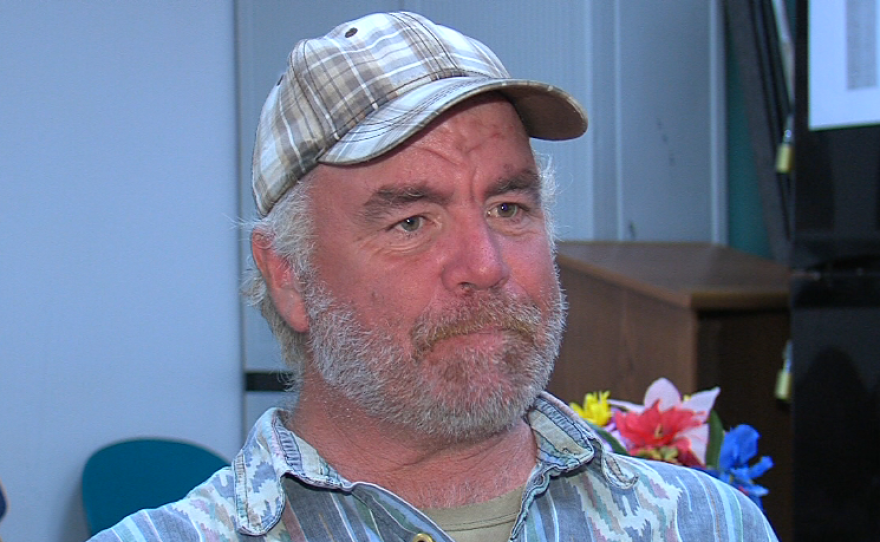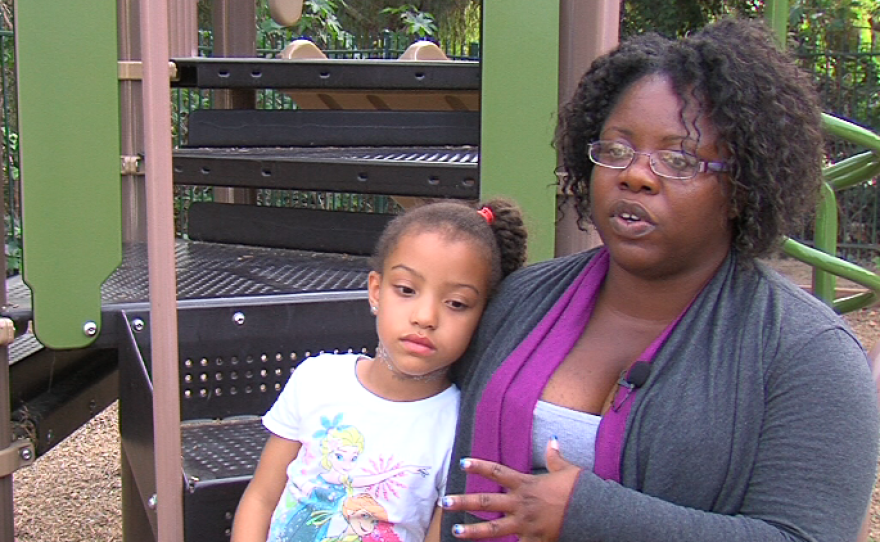Emergency homeless shelters in Escondido and Vista are raising funds to stay open year-round. Organizers say that's because shelters serve people who are already working or are on track to becoming employed.
That includes Rhonda Edwards, who moved in November with her daughter Lyric into Operation Hope, an emergency shelter for homeless families in Vista.
It was a welcome relief. They had spent several weeks couch surfing, after Edwards got sick and lost her job as a licensed vocational nurse. She had no reserves to fall back on.
“We were living literally from paycheck to paycheck,” Edwards said as she watched Lyric playing on a climbing frame in the shelter’s playground. "Between paying for rent and all the bills and also childcare, it ate up my paycheck every time I got paid. It literally was gone within a couple hours."
They now share a small room with a bunkbed: Lyric on top and Rhonda underneath. Operation Hope has 45 beds and about half are occupied by children.
Within a week of opening on Nov. 1, there was a waiting list of 70 families.
Operation Hope's director Kathleen Higgins said most are single parents, and though some have lost jobs, many of them are working.
"In fact we have quite a few of them who are working right now but still can’t afford to put a roof over their head," she said. "And this for us is the first season where we are seeing the number of clients that are here because they can’t afford to keep a roof over their head outweigh the number of clients with other more traditional homelessness circumstances, like an addiction that they were dealing with."
The average rent in San Diego County was just over a $1,000 a month for a studio apartment and $1,600 for a two bedroom unit in September, according to the San Diego County Apartment Association. The nonprofit released figures this month that show vacancy rates have fallen, and that North County has the lowest rental vacancy rates in the county at 2.4 percent.
At Haven House, Interfaith Community Service’s emergency shelter for adults in Escondido, executive director Greg Anglea has the same story to tell.
"In our shelters last year, the number one reason somebody was homeless was not losing a job, it wasn’t fleeing violence, it wasn’t a personal injury, it was simply not being able to pay their rent," he said.
The year-round shelter is designed to help those homeless who are already working or are on track to get jobs, he said.

Erik Hiller comes to Interfaith’s pantry regularly for help with food. He’s homeless and camps out in the hills around Escondido.
"You have to understand that if you get a job for, let’s say $12 an hour, that’s not enough to afford even a studio apartment, so the motivation isn’t there," he said.
Hiller has been homeless on and off for years. He said he’s noticed a whole new group of people showing up at the pantry.
"When you’re having breakfast, you’re seeing a lot of new faces, people you’ve never seen before," he said.
Doug Ferris, the manager of Haven House, said new contacts made at the emergency shelter can be the key to solving the problem of high rents.
"If we can find two or three people who might all be in the same underemployment situation, we can put them together and find a location for the three of them to live," he said.
Haven House is raising money to keep 49 beds for men and women open year-round starting this week. Interfaith estimates that will cost $500,000 next year. The organization is nearly there, with $70,000 still needed to meet the goal.
Most of the money is coming from private donors, but North County cities have also contributed, Anglea said.
"We have the support of the cities to do this, because Escondido, Vista realize that if we have this shelter open twelve months of the year, we’re going to be getting people off the streets and into their own homes twelve months of the year," he said.
Winter shelters have become much more than just a roof over someone's head. The people who stay at Haven House have to commit to being clean and sober and work with a case manager to get the resources they need to become self-sufficient again.
Like Interfaith’s Haven House in Escondido, Operation Hope in Vista is raising money to stay open all year.
"The reality is, if they’re not in a shelter, where are they?" the director Higgins said. "They’re sleeping on the street, they’re sleeping in their car, and maybe they’re couch surfing. It doesn’t matter whether it’s warm outside or not, that isn’t any way to live, especially with children, so the first step in trying to bridge that problem is going year round. That will make a huge difference."
Higgins said it won't happen this year, but Operation Hope is working to get its own financial foundation solid enough to operate all year soon. The emergency shelter has evolved over the years from being housed in a warehouse to a safe compound, but the budget for year-round staffing is not there yet. A team of volunteers helps the two paid staff members keep all the families on track, with donated food and clothing.
Rhonda Edwards is taking classes in budgeting, credit recovery and healthy relationships. She said she is beginning to understand what she needs to do to manage her finances.
"I am definitely learning what it is I can and cannot do financially for us to live, not only comfortably, but not fall, like we did this time," she said.
The best thing that’s happened, she said, is that she’s had time to get close to Lyric.
"I’ve learned more about my daughter in the past month than in the past few years because of me working constantly," she said. "I was working just to pay bills and to make sure she had a roof over her head. Now it’s like, I recognize her and the things that are going on with her."








